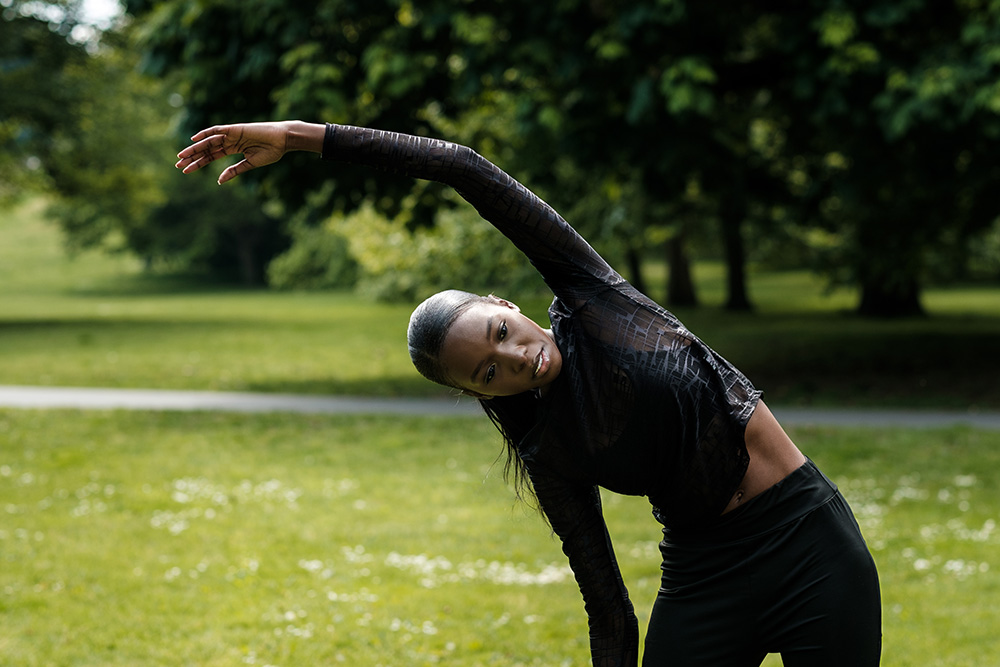Stretching is good for your overall well-being. It can be great to help keep you flexible, moving at your full range of motion and keeping your muscular health up. However, sometimes you may experience a weird sensation of dizziness when stretching your arms over your head. While it can just be a little uncomfortable and usually not a big deal, it might be a sign that something serious is happening. Getting down to the root cause can help you effectively manage this head-spinning issue and get you back to your normal routine.
Potential causes behind your dizziness
There are several potential causes behind the dizziness you’re experiencing when you stretch your arms over your head. Some are simple issues, while others can be more serious and need medical attention. Potential causes can include:
- Muscle tension and fatigue — Tight or overused muscles in your neck, shoulders or upper back can cause blood flow to become restricted and cause you to feel dizzy when you reach overhead.
- Dehydration — When you are dehydrated, it can cause you to have a decreased blood volume and lower blood pressure. This can make it easier for you to become dizzy when doing physical activities like stretching.
- Inner ear issues — Conditions like benign paroxysmal positional vertigo (BPPV) or vestibular migraines can cause dizziness when your head is moved, like when doing overhead arm stretches.
- Orthostatic hypotension — Orthostatic hypotension is a sudden drop in blood pressure when you go from a sitting or lying position to a standing one. Stretching your arms over your head can also cause this drop in blood pressure. Dizziness can be caused by suddenly dropping blood pressure.
- Cervical spondylosis — Degenerative changes in the cervical spine, like cervical spondylosis, can cause your nerves or blood vessels to become compressed. This compression can be worsened when you stretch your arms up over your head and cause you to become dizzy.
Symptoms that can accompany dizziness
If you are experiencing dizziness over your head, you may experience other symptoms like:
- Nausea.
- Headache.
- Lack of balance.
- Blurred vision.
- Weakness.
- Fatigue.
Treatment options for dizziness when stretching your arms overhead
Addressing dizziness during overhead stretching can include a variety of treatment options, including:
- Hydration and nutrition — It’s important to stay properly hydrated and eat a balanced diet. Nutrients like magnesium, potassium and calcium can help keep muscle fatigue and cramping at bay. Staying hydrated helps support muscle function and helps flush out toxins that can cause muscle tension.
- Posture correction — Using good posture habits and ergonomics can help alleviate muscle tension and fatigue, especially in the neck, shoulders and upper back.
- Medication — In some cases, over-the-counter medications can be taken to help manage pain, inflammation or muscle spasms. Medications should be used cautiously and under the guidance of a health care professional.
- Physical therapy — A physical therapist can develop a personalized treatment program to address the underlying issue causing your dizziness when you stretch your arms overhead. Physical therapy can help with issues like muscle tension and vestibular imbalances.
Physical therapy for dizziness
Physical therapy can be an effective treatment to manage a variety of conditions, including those that can be behind your dizziness when you stretch your arms over your head. Physical therapy techniques can include:
- Vestibular rehabilitation — Your inner ear helps keep you balanced. If your dizziness is caused by a vestibular-related issue, your physical therapist may use vestibular rehabilitation to fine-tune your balance to help restore your stability. They will take you through exercises that will work your gaze stability and regulate head movements to decrease dizziness.
- Balance training — Dizziness can throw off your balance. Your physical therapist may use balance training to help improve your proprioceptive awareness. Exercises may include standing on one leg while keeping a stable and aligned posture. This challenge challenges you to hold your body position and counteract imbalances. As you progress, the exercises can become more dynamic to and develop and further challenge your spatial awareness.
- Manual therapy — Manual therapy encompasses a variety of techniques that can help alleviate muscle tension and improve flexibility. If your dizziness is caused by muscle tension in your neck, shoulders or upper back, your physical therapist may use soft tissue mobilization. This technique uses manual pressure to specific muscle groups experiencing tightness. It can help improve tissue flexibility and reduce muscle tightness, which can help improve circulation that may be causing your dizziness.
- Therapeutic exercises — Stretching and strengthening exercises can help the muscles in your neck, shoulders and upper back. Strengthening these muscles can provide you with better support and stability. Stretching these muscles can help improve your flexibility and mobility. Neck tilts and shoulder rolls can help alleviate tension. Chin tucks and scapular retractions can help improve your posture and reduce muscle fatigue. Neck rotations can improve the mobility of your neck. These can all reduce muscle tension and boost circulation to help keep dizziness at bay.
Forever Fit Physical Therapy & Wellness can help you overcome dizziness when you stretch your arms over your head
Feeling dizzy when you stretch your arms over your head can be a disconcerting experience. At Forever Fit Physical Therapy & Wellness, our expert team is well equipped to help you determine and tackle the underlying issue leaving your head spinning. We strive to provide you with compassionate and personalized care to empower you to regain your confidence in your movement and alleviate your dizziness-related discomfort. We can help improve your flexibility, strengthen muscles and boost proprioception on your journey to reach for the sky without the worry of feeling dizzy.
Contact our team today for more information or to schedule an initial appointment.

